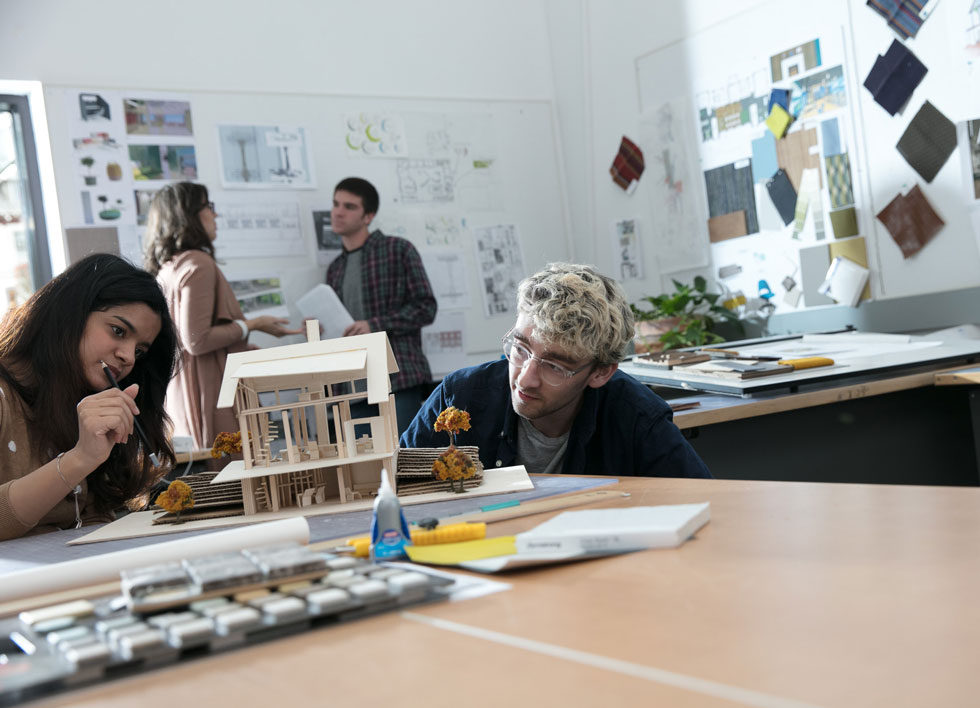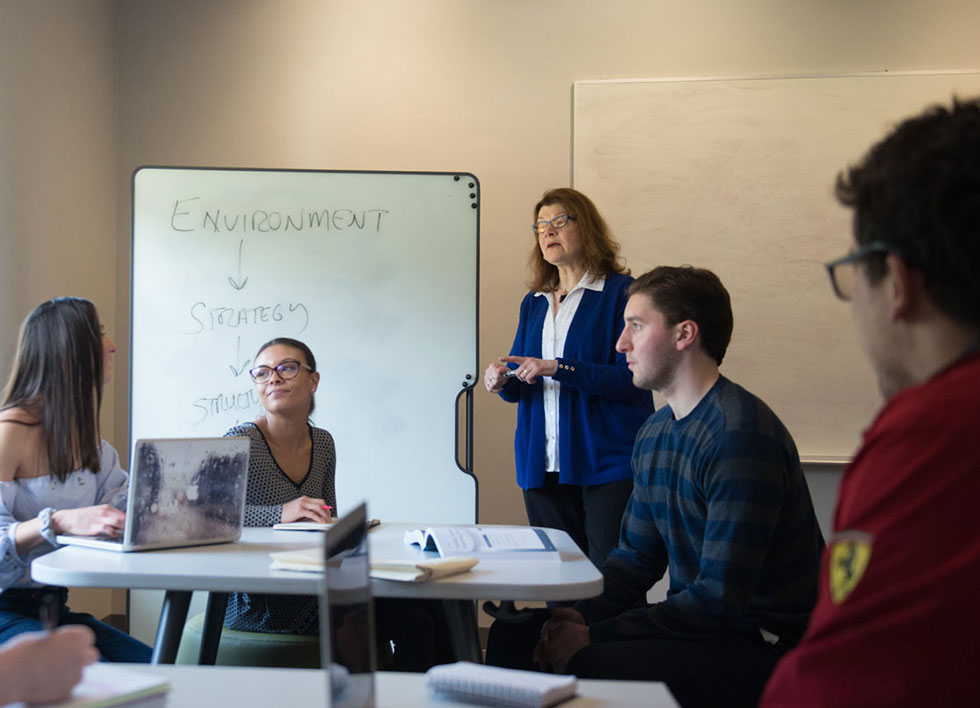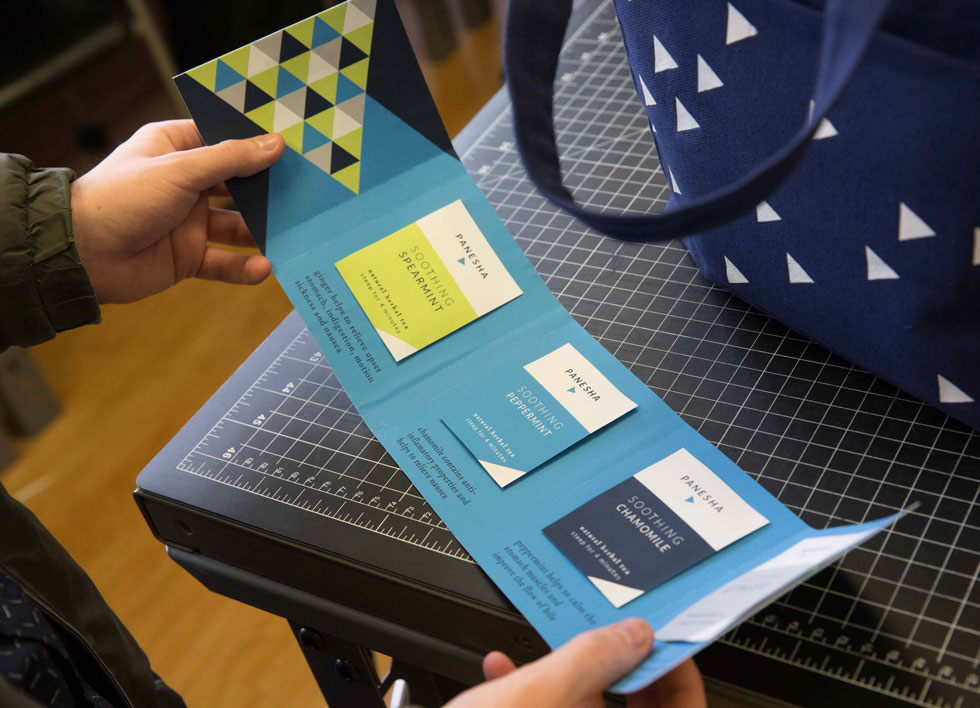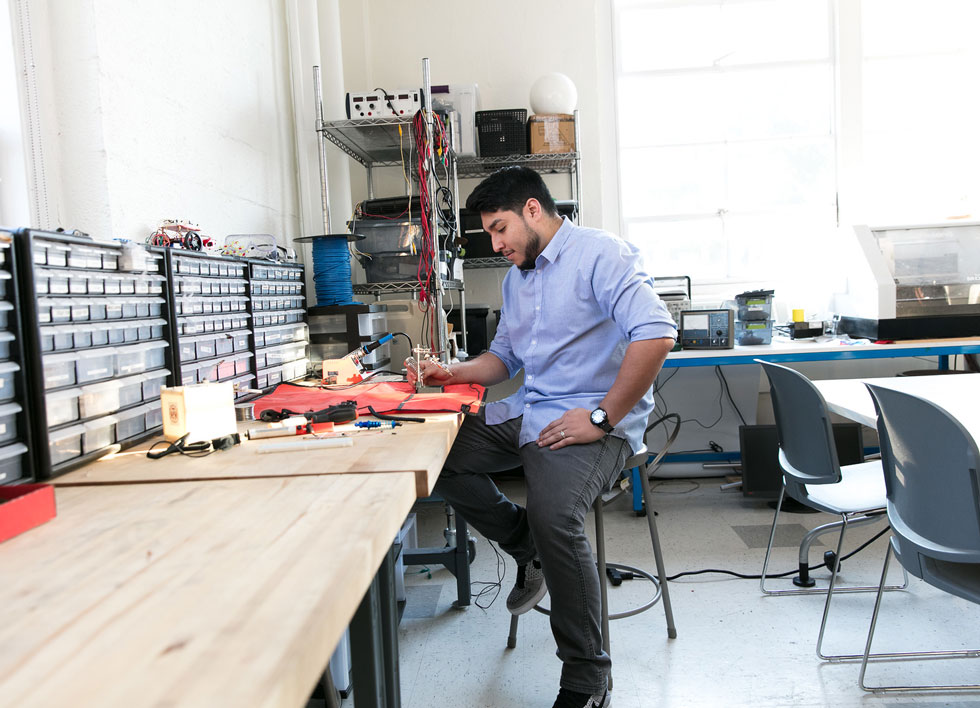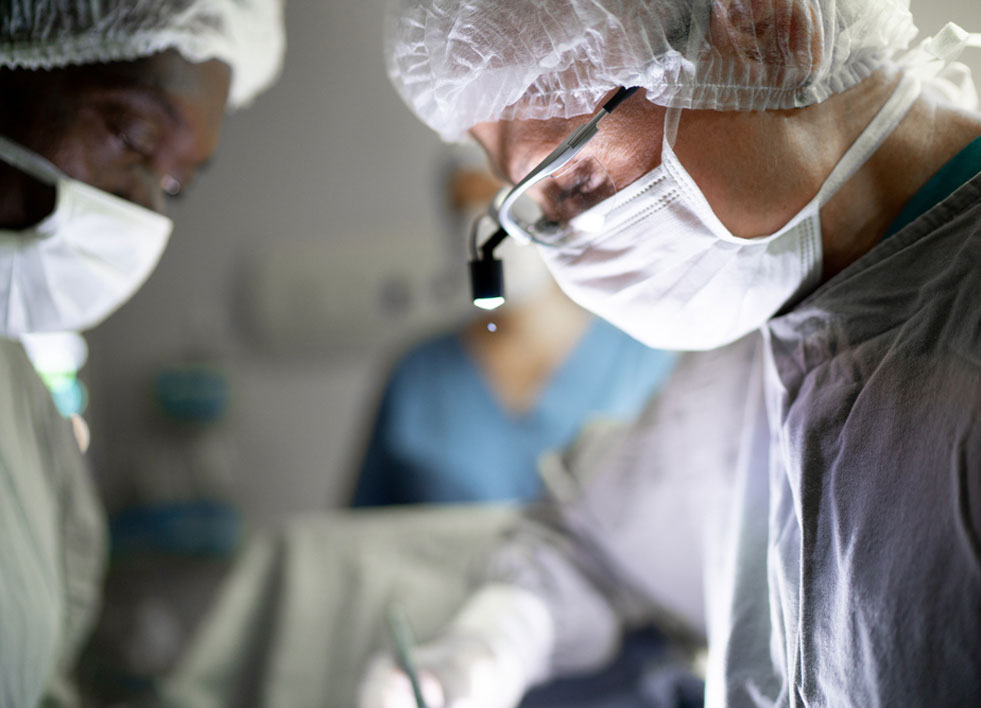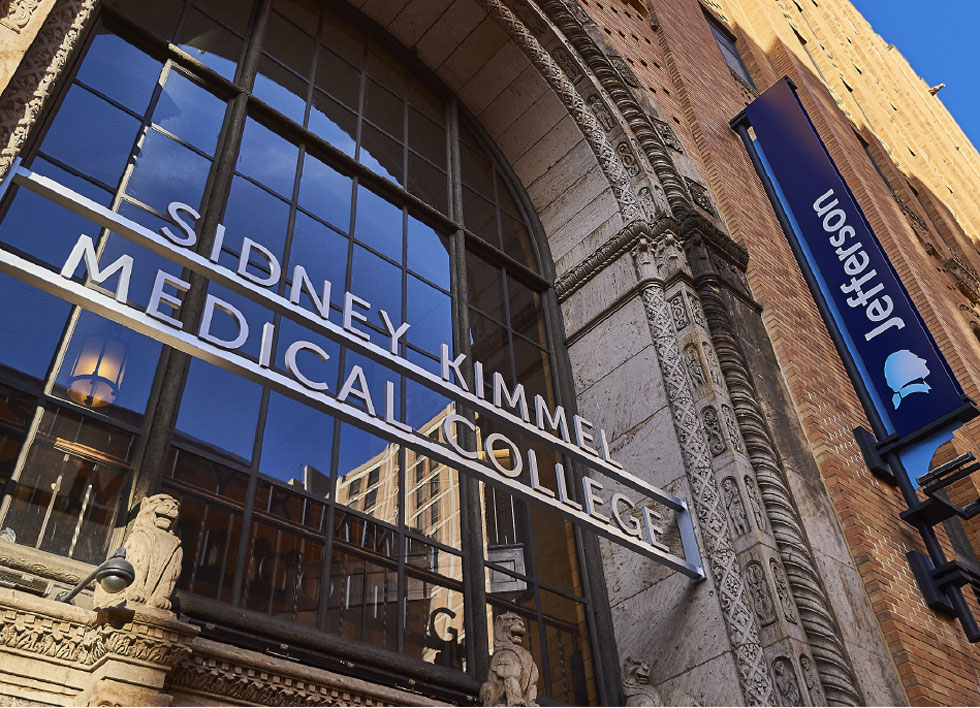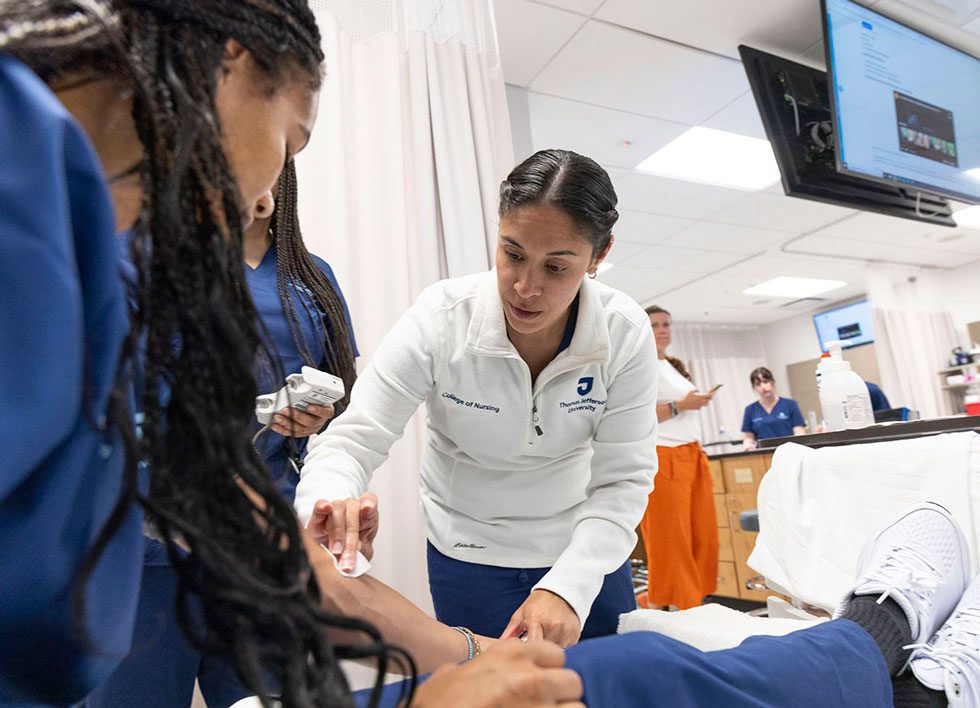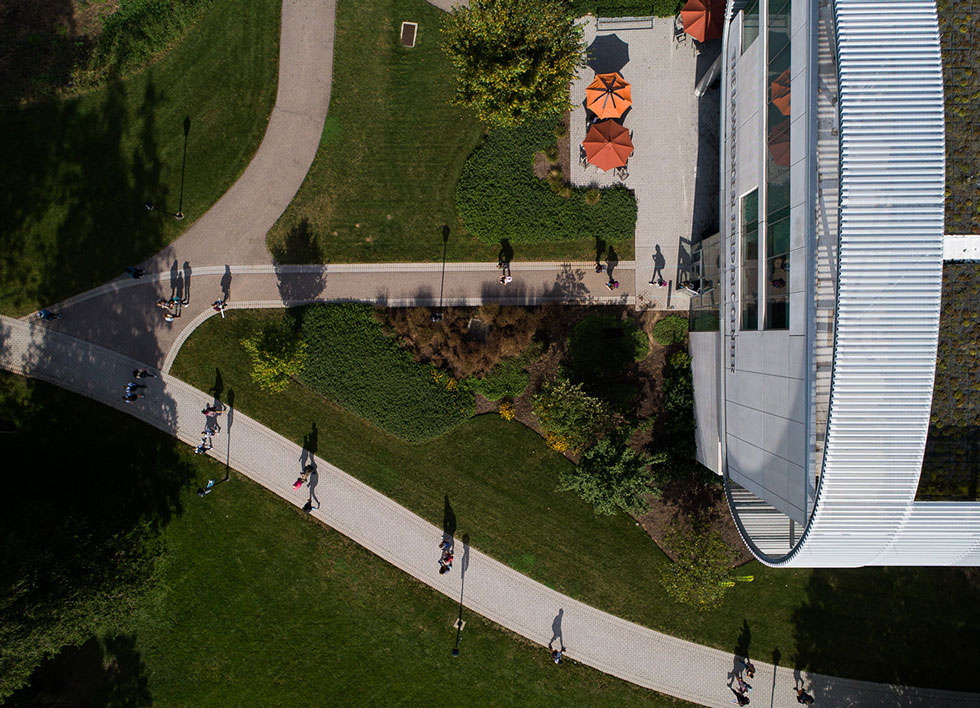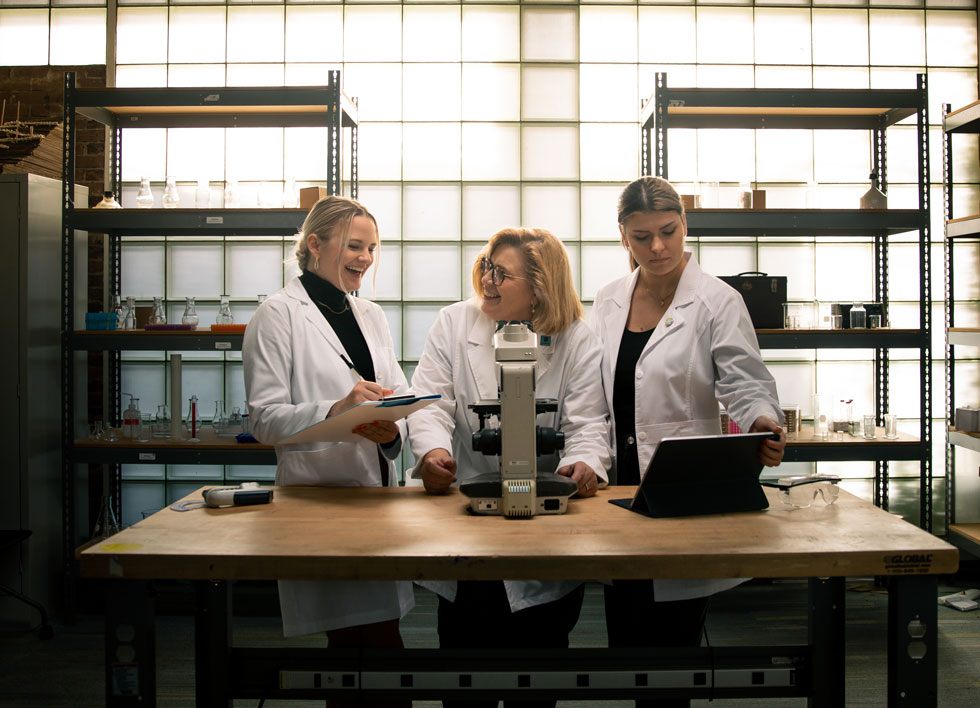Jefferson is where architecture and extended reality meet, creating a virtual world which transports users into an interactive 3d environment. When Sal Armetta, bachelor of architecture student in the College of Architecture and the Built Environment, wanted to focus on designing a virtual world for his thesis project, he didn’t have to look any further than the Kanbar College of Design, Engineering and Commerce’s animation and digital media program.

Nexus Learning
At Thomas Jefferson University, we've always believed we needed to create the professionals of the future. (We've been doing it since 1824.) Our method? We call it Nexus Learning™ — our signature approach that is making Jefferson a transformative force in higher education. We are preparing students for the future of work by ensuring development of critical skills employers seek for tomorrow’s work place.
Ever heard the phrase two heads are better than one? When great minds come together, solutions are found. We also believe those great minds don't have to think alike. At Jefferson, interdisciplinary student teams join forces with faculty and industry capitalizing on their respective talents and creating real value in the world.
Nexus Learning means just the right blend of theory and hands-on learning. Our signature approach provides students with a real competitive advantage in a rapidly changing world.
At Jefferson, you’ll experience Nexus Learning from the very beginning. The collaborative spirit is in everything we do no matter what your major is. Watch our students create a building across the world in China, design the next product for Tenneco, develop a vaccine and more.
“The College of Architecture and the Built Environment stands out because we’re constantly working on projects with different majors. Collaboration is key in an architectural education because that’s how it is in the real world too.” Working with partners at universities in China on a team competing in the Solar Decathlon, the Jefferson students develop a building façade that meets requirements for sustainability, innovation, versatility and design aesthetics.
Collaboration is key to bringing any collection to life, just ask the textile and fashion students who brought the Ocean Awakening designs to life. Watch as they push each other to be their best selves and find that a-ha moment.
Every year we look forward to the industry sponsored Tenneco competition, where industrial design, engineering and business students have the opportunity to design and pitch a new product using a material manufactured by Tenneco. This is just one of the many examples of Nexus Learning at Jefferson.
Jefferson nursing and medical students came together on a number of pandemic-specific volunteer and training opportunities, supporting Jefferson in many areas of COVID relief. The most notable of these opportunities have included providing much needed manpower to Philadelphia’s mass vaccination clinic at the Pennsylvania Convention Center, which is responsible for providing over 6,000 vaccines daily to members of the Philadelphia community.
Students in Jefferson’s Kanbar College of Design, Engineering and Commerce and the College of Rehabilitation Sciences partnered with Carousel Connections to create solutions for young adults with disabilities to live independently with confidence. One of the foundational elements to obtaining a healthy lifestyle is being able to independently prepare nutritious meals while using methods that are both convenient and efficient. This team of students created a strategic cook book system which enables individuals to learn to cook for themselves, while also teaching valuable skills that may provide future job opportunities in the food and beverage industry.
A team of Sidney Kimmel Medical College students in the scholarly inquiry design track collaborated with the Jefferson Center for Autism and Neurodiversity to assist the Center with considering how an interactive healthcare passport for patients with autism spectrum disorder and neurodiversity would be helpful in emergency room scenarios. The students assisted with interviewing emergency medical professionals and designed potential solutions from their perspectives.
Students team up for hands-on experience on how vaccines are made in Jefferson Institute for Bioprocessing and Center City labs. They seek ways to use creativity for advancements in optimizing processes, scaling up and making gene therapy affordable, ingestible and tolerable.
Areas of Interest
Our core programs—or Areas of Interest—drive students beyond the traditional limits of academics to inspire change and test just how far we can take what we know.

